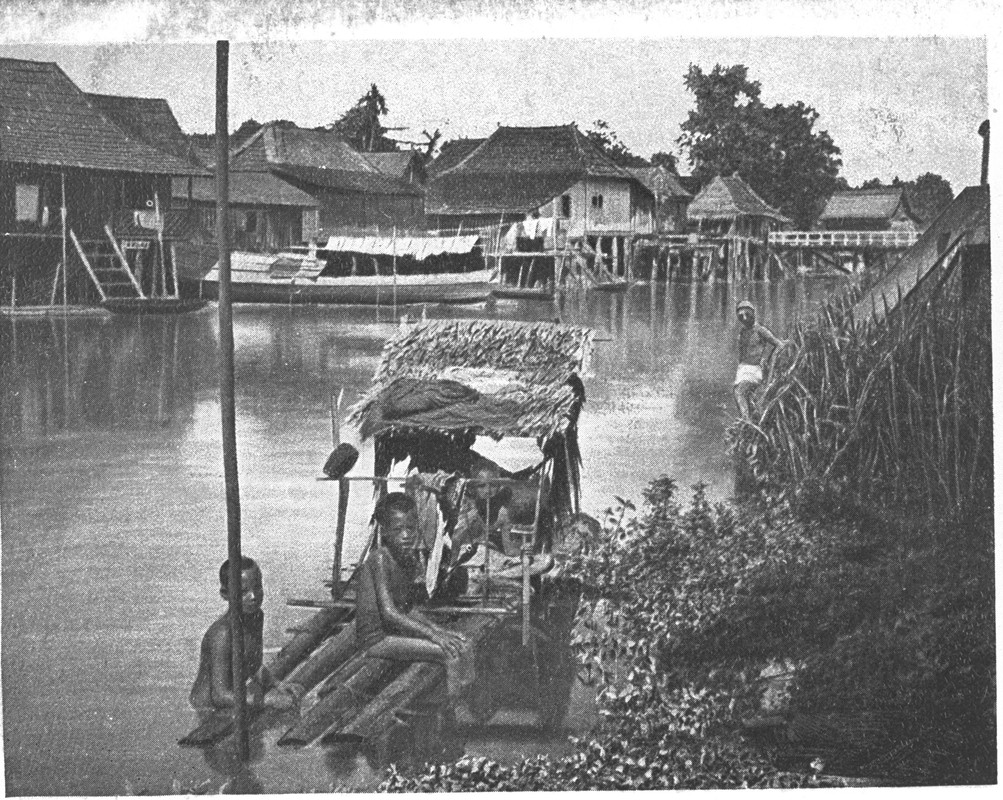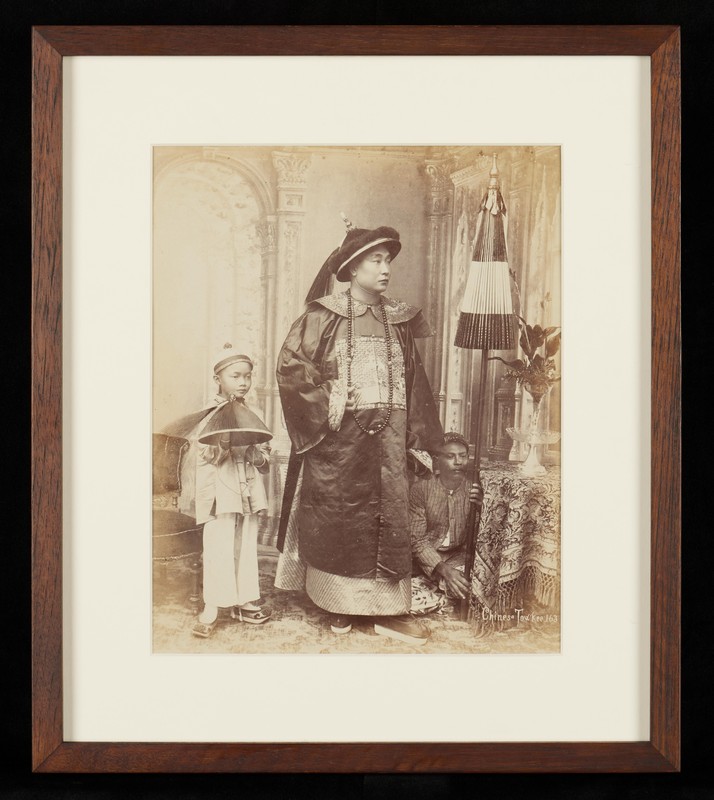An overview of Chinese community organisations in Singapore
Chinese community organisations in Singapore have endured for over 200 years. Over the course of their rich and complex history, they have often been successful at adapting to the times.
The first Chinese junk that came to Singapore directly from Xiamen set sail on 18 February 1821, marking the beginning of mass migration of Chinese from the coastal regions of China to Southeast Asia. From the 1820s, two major groups of Chinese immigrants could be found in Singapore. The group that travelled to Singapore on Chinese junks originated from the coastal provinces of Fujian and Guangdong. Most of them were labourers or skilled workers such as carpenters. The better-educated ones worked as letter writers, clerks, or taught in private schools. The other group of Chinese immigrants was made up of merchants from Malacca who had ancestral roots in Zhangzhou and Quanzhou in Fujian. They were mostly already well-connected internationally, and had solid economic foundations, giving them an advantage over other scattered immigrants who had come from various places. By the mid-19th century, Singapore’s Chinese community had taken shape with the two waves of immigrants who would eventually influence its development in a profound way.
Management of cemeteries
Since immigrants who had newly arrived were unfamiliar with the island and had no network of their own, they had to rely on fellow clansmen for livelihood-related matters. This led to the formation of clan associations, as it was necessary for people to band together to support each other in order to survive. According to inscriptions on the monument erected for the reconstruction of Ying Fo Kun in 1844, mutual assistance was a priority for those who travelled to a distant country. Having a place to live in was most important when it came to settling down in foreign lands.

However, very few of these immigrants succeeded in making a fortune, and many lived in abject poverty and died in foreign lands. According to the Heng San Teng Tablet of 1830, in order to provide a resting place for those overseas Chinese who had died in a foreign land, See Hoot Kee (1793–1847), a leading figure in the Hokkien community at that time, founded the Heng San Teng, which was mainly responsible for handling the funerals and sacrifices of these overseas Chinese from Zhangzhou and Quanzhou, and for managing the cemeteries of the Hokkien community. Heng San Teng not only served the function of a burial ground, but also served other social functions, where formal gatherings and deliberations of the clan were held. It was the most prominent institution of the Hokkien community in the early years of modern Singapore. See Hoot Kee went on to formalise and institutionalise the management of cemeteries, and the rules and regulations created in 1836 during his tenure as chief director had set a precedent for the management of Chinese temples.
Other dialect communities established their own cemeteries too. For example, the Cantonese and Hakka communities founded Cheng San Teng and Loke Yah Teng, while the Teochew community had Tai Shan Ting. During the colonial period when welfare systems were not well-established, the traditional concept of “honouring one’s ancestors” had held the Chinese community together, which shouldered the responsibility of taking care of the disadvantaged members of the community of each dialect group through the management of such communal cemeteries.
As society progressed, Heng San Teng could no longer meet the needs of the times. When Thian Hock Keng Temple was completed in 1842, it replaced Heng San Teng as the leading institution of the Chinese community in Singapore. See Hoot Kee’s role as leader of the Singapore Chinese society was then transferred, without any conflict, to Tan Tock Seng (1798–1850), then-chief director of Thian Hock Keng Temple. Tan, who served the Hokkien community through the temple, was best known for donating 7,000 dollars of his own money for the establishment of Tan Tock Seng Hospital in 1844. The hospital provided medical services to the general public, regardless of race or ethnicity, thus benefiting the entire Singapore society.
Clan associations as bastions of culture
Clan associations were established to meet people’s basic material and cultural needs, serve as centres for communication, and unite their clansmen. Other than addressing issues related to employment and accommodation, the associations were involved in caring for the sick, conducting marriage and funeral ceremonies, resolving disputes, maintaining discipline and order, running hospitals and schools, and initiating charitable projects. With the changing of times, these clan associations have developed a high degree of social role, which was reflected more prominently in the played as bastions of culture.
The Chinese community was clearly enthusiastic about education in those early years. Clan associations set up a slew of schools, including Chongwen Ge and Chui Eng Si E (also known as Chui Eng Free School), the first private Chinese schools in Singapore, which were founded by Tan Kim Seng (1805–1864) in 1849 and 1854 respectively; Ying Xin School, by Hakka clan association Ying Fo Fui Kun in 1905; Yock Eng High School, by Kiung Chow Hwee Kuan in 1910; Yeung Ching School (now Yangzheng Primary School), by the Cantonese community in 1905; and Tuan Mong School, by Ngee Ann Kongsi in 1906.

In 1919, members of several communities came together to set up the first Chinese secondary school in Singapore, The Chinese High School. While Chinese education had had a century-long history in Singapore by then, the education system was still incomplete as it comprised only primary and secondary schools, and the wish for access to higher education and deeper culture had yet to be realised. The Chinese in Singapore and Malaya were determined to start a university with Chinese language as the main medium of instruction. In 1955, the Nanyang University was established as Southeast Asia’s first Chinese institution of higher education, after Tan Lark Sye (1897–1972), then-chairman of Singapore Hokkien Huay Kuan, had mooted the idea. The founding of the university marked the pinnacle of Chinese community-run education institutions in Singapore.
Foresight and transformation
The purchase and construction of property has been a common practice throughout the development of Chinese community organisations, laying the economic foundation for their long-term survival.
The Singapore Hokkien Huay Kuan in Telok Ayer Street is one example. In the 1950s, then- chairman Tan Lark Sye and businessman Lee Kong Chian (1893–1967) each donated 200,000 dollars to build a six-storey building for the association on the land opposite Thian Hock Keng Temple. In 2003, this six-storey property was rebuilt as an eight-storey commercial building, which was then extensively upgraded in 2021 before being opened for leasing.
Another example is the Ee Hoe Hean Club, a heritage building that is strategically located in Chinatown, reflecting the foresight of the pioneers who bought the property.
Over the years, leaders of the Chinese community in Singapore have invested in real estate to finance their community organisations — supporting the development of these associations, and ensuring that they continue to flourish.
The key to the survival of Chinese community organisations over the years is their ability to adapt to the times, making changes to their organisational structures and roles to remain relevant. A seminar on the Chinese clan associations on 2 December 1984, as well as the establishment of the Singapore Federation of Chinese Clan Associations (SFCCA) in the mid-1980s broke the silence that had characterised the clan associations for many years. Today’s Chinese community organisations continue to evolve with the times, transforming themselves into bastions of culture with the mission of preserving Chinese culture.
Under the leadership of SFCCA, Chinese community organisations have kept pace with the times in recent decades, establishing the Chinese Heritage Centre, jointly starting the Chinese Language and Culture Fund, producing television programmes, and creating a comprehensive digital mobile app “SFCCA IMMP”. These initiatives promote Chinese culture, and also help new immigrants to integrate into Singapore society.
Chinese community organisations are a significant social force, and the clan associations that have been revitalised from the transformation will continue to shoulder their historical tasks and become the mainstay of the Singapore Chinese community by adapting to the needs of the times in their future development.
This is an edited and translated version of 新加坡华人社团概述. Click here to read original piece.
Kua, Bak Lim. “Xinjiapo minji renshi de shehui zhengnengliang” [Positivity in society among Singapore Hokkiens]. In Tuozhan yu chuancheng: haishang sichouzhilu shang de fujianren [Pioneering and dispersing: Hokkiens along the maritime silk road], edited by Lim Chong Keang, 123–152. Kuala Lumpur: New Era University College, 2017. | |
Kua, Bak Lim, ed. Xinhua lishi renwu liezhuan [Biographies of Singapore Chinese Figures]. Singapore: EPB Publishers, 1995. | |
Kua, Bak Lim. “Huaren huiguan de xiandaihua wenti” [The problems faced by Chinese associations in modernisation]. In Zonghui san nian [Commemorating three years of the Singapore Federation of Chinese Clan Associations], 40–48. Singapore: Singapore Federation of Chinese Clan Associations, 1989. | |
Kwa, Chong Guan and Kua, Bak Lim, eds. A General History of the Chinese in Singapore. Singapore: Singapore Federation of Chinese Clan Associations, 2019. | |
Lee, Yip Lim. “Zhongguo fanchuan yu zaoqi de xinjiapo” [China junks and Singapore in the early days]. In Xinjiapo huazushi lunji [Symposium of the Chinese history in Singapore], edited by Kua Bak Lim and Ng Chin-Keong, 1–9. Singapore: The Association of Nanyang University Graduates, 1972. | |
Yang, James, ed. Sanshiniandai nanyang huaqiao tuanti diaocha baogaoshu [Report on Nanyang overseas Chinese societies in the 1930s]. Taipei: Zhonghua Xueshuyuan Nanyang Yanjiusuo, 1984. |










